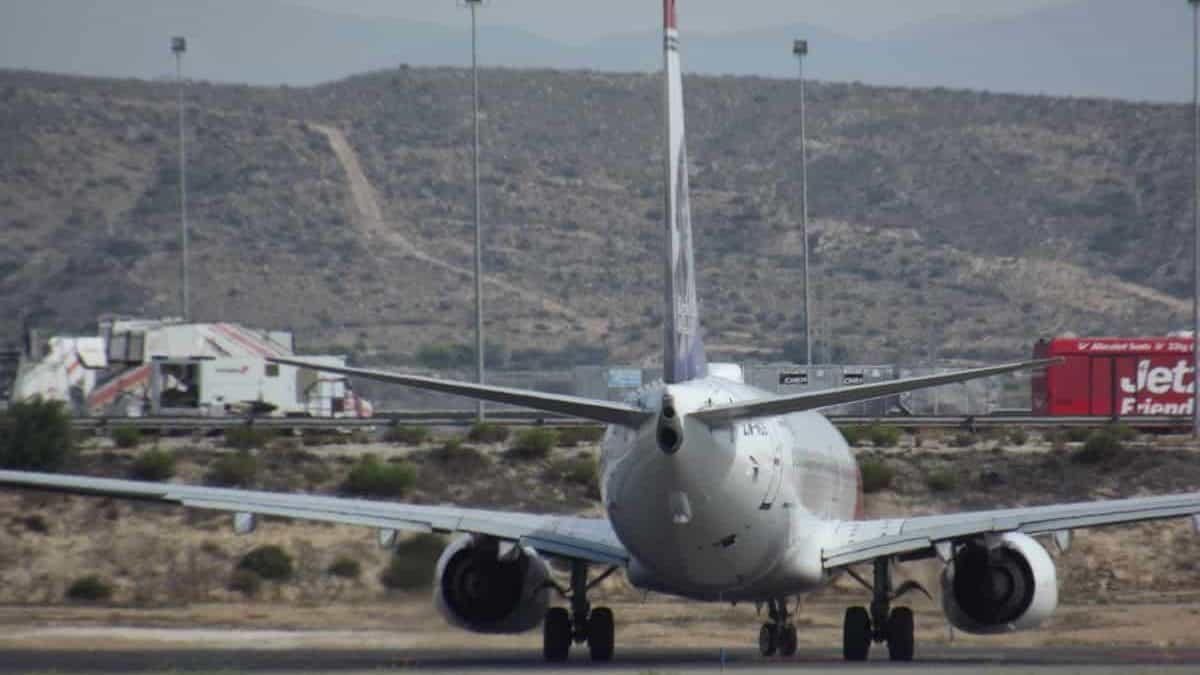
If you have ever walked out to an airplane across the tarmac and not a jetway you may have been met with the loud, deafening sound of an engine running nearby, especially if you were boarding through the rear door of the aircraft.
This noise is coming from a very small, but very needed jet engine mounted in the tail section of the aircraft, and it’s known as the APU or Auxiliary Power Unit.
An APU is a small gas turbine engine located in the tail of an aircraft and runs to provide electrical power when the main engines are not running. This allows for lighting, emergency hydraulics, and climate control to operate. It also provides high-pressure air for starting the main engines.
To find out more about how this noisy, but essential piece of equipment is used by the pilots please read on…
What is an APU?
The APU is an Auxiliary Power Unit and does exactly what it sounds like. It is a self-contained gas turbine engine (small jet engine basically) installed within a fireproof compartment, located in the back of most aircraft, usually incorporated inside the tail cone, or in some aircraft, it can be found in the wheel well bay area(under the main body of the airplane).
Its job is to provide electrical power and high-pressure air to the aircraft for certain applications.
The APU’s structure is identical to that of a regular airplane jet engine but without the cowlings around it. It draws in air through a small automatic door, that is opened and closed when the APU control unit commands. The door is located at the rear of the aircraft and its exact location varies by manufacturer.
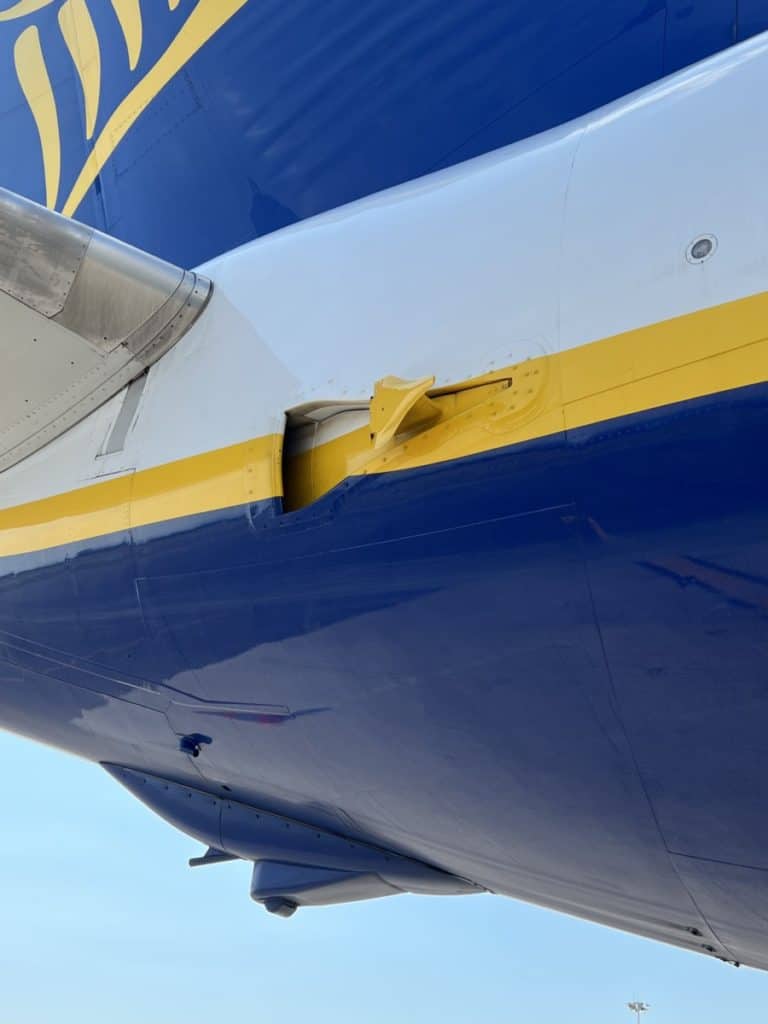
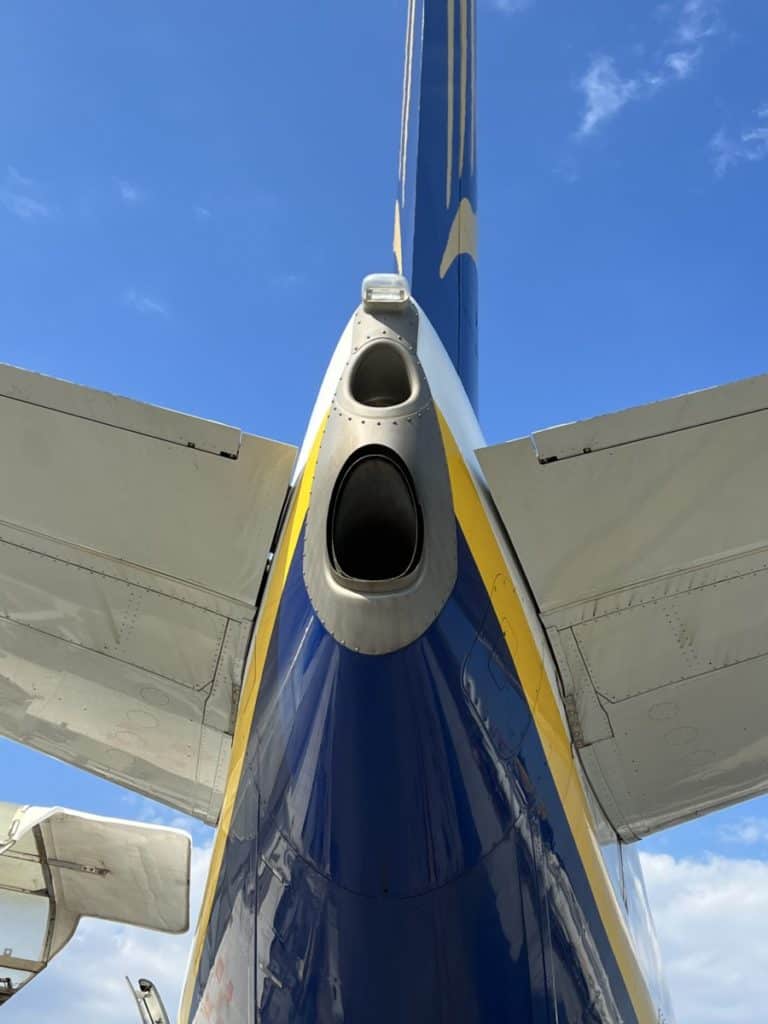
The APU’s exhaust gasses discharge overboard through an exhaust muffler at the back of the tail cone.
The auxiliary power unit provides AC electrical power for the aircraft and is capable of supporting the entire electrical load needed to run the aircraft’s systems, lights, instruments, emergency systems, fire extinguisher systems, and air conditioning.
AC power is supplied by one or two electrical generators mounted directly to the gearbox of the APU
Yes, the APU is also used as an air conditioner, since the air that it can provide from its intake compressor can go through the air conditioning packs of the airplane. The aircon packs then cool down to the temperature selected by the pilots for both the cabin and the flight deck.
Another main function of the APU is to supply high-pressure air for starting the main engines. Some people think that the APU can provide additional thrust, the APU unfortunately cannot provide any thrust.
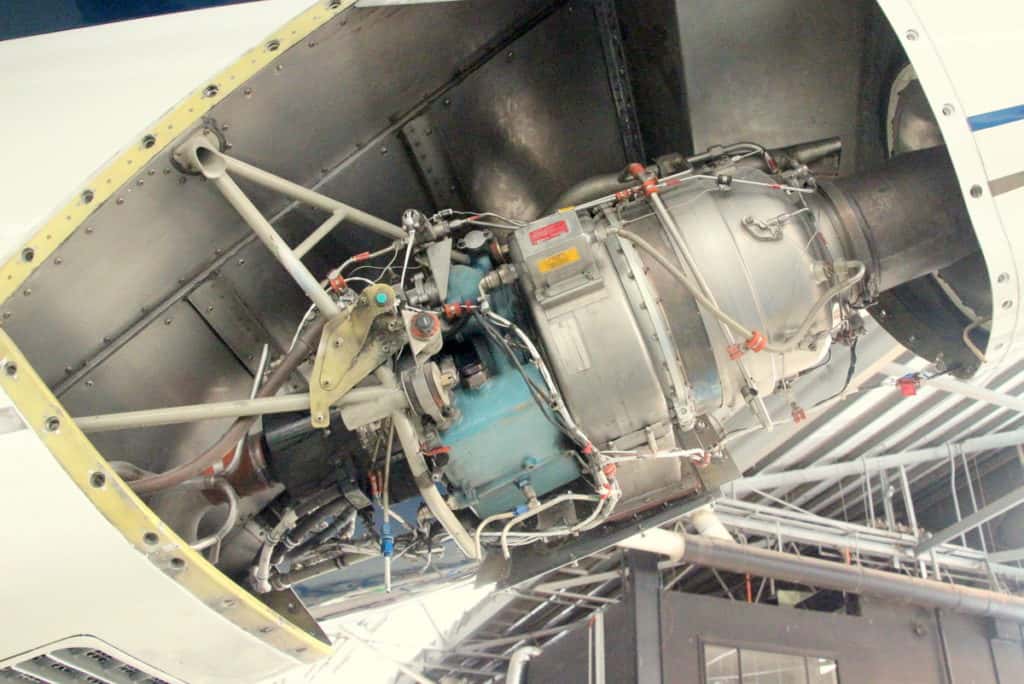
One benefit most passengers will appreciate without even knowing is if the airplane gets parked out on the taxiway during a temporary airport closure during the passage of a thunderstorm cell. That APU is what is keeping the airplane nice and hot/cool and the lights and entertainment system running when the pilot shuts down the main engines to conserve fuel.
Learn More…
Try These Articles:
* Do Airplanes Use Hydraulics?
* Do Helicopters Have Jet Engines? – Some Do, Some Don’t!
How Does an APU Operate?
When commanded by the pilot, the APU can start fully automatically with just the flick of a switch and can operate up to the maximum certified altitude of each aircraft (in the case of the Boeing 737-8, said altitude is 41,000 feet).
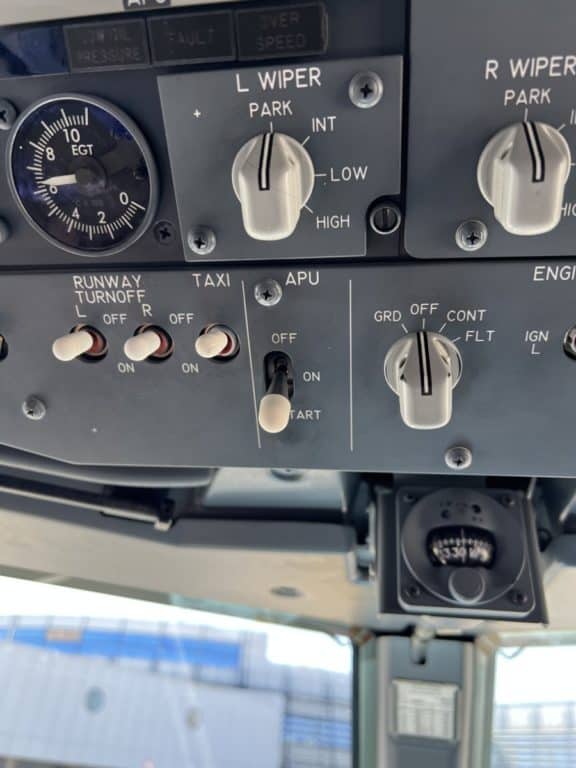
The APU can take up to 2 minutes to start depending on the outside air temperature and the shutdown cycle also takes approximately 2 minutes as it incorporates a 2 minute cooling period.
Fuel for the APU is supplied by the aircraft’s main tanks and it consumes around 15 gallons or 60 kg per hour with an electronic control unit (ECU) controlling the operation of the APU at all times.
The ECU features automatic shutdown protection to monitor and prevent overspeed conditions, low oil pressure, high oil temperature, APU fire, fuel control unit failure, EGT (Exhaust Gas Temperature) exceedance, and other system faults monitored by the ECU.
If the APU becomes the only source of electrical power in the unfortunate event of losing both engines AC electrical power generators or in a dual engine failure, the Electronic Control Unit automatically provides power to the most important systems of the aircraft such as the instruments to fly the aircraft, fire warning systems, fire extinguishing systems, and emergency systems.
If needed, the cabin lights may be switched off to offload some of the electrical load and prevent the APU from shutting down from being overloaded.
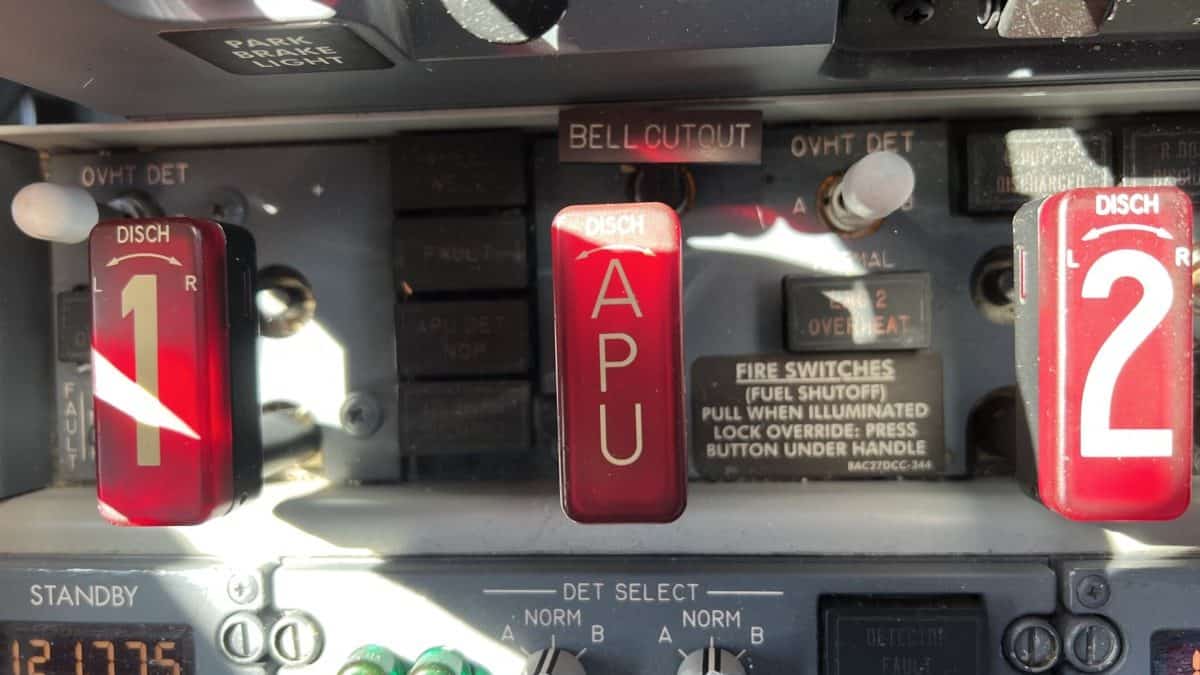
A fire extinguisher system is located in the APU’s compartment and it can be controlled from the cockpit in case of a fire or overheating. A visual indication on the pilot’s caution and warning panel will notify them if there is a fire in the APU compartment.
With the APU being housed in a fireproof compartment it is easy for the pilots to fire the extinguisher (Pulling on the handle shown above) and prevent any heat or flames from spreading to other parts of the aircraft.
Cabin Pressurization
We keep talking about the APU being used for the air conditioning unit but why is that so important? Well, the answer is not just because we want to control the temperature of the cabin.
The most important use of the bleed air provided by the APU and the engines is that it keeps the aircraft pressurized.
Pressurization of the cabin is a vital thing for the aircraft as it keeps the cabin pressure at a value needed for humans to be able to breathe.
Here you can see that pressurized air can be fed to the aircraft from either both main engines or the APU depending on how the switches are configured.
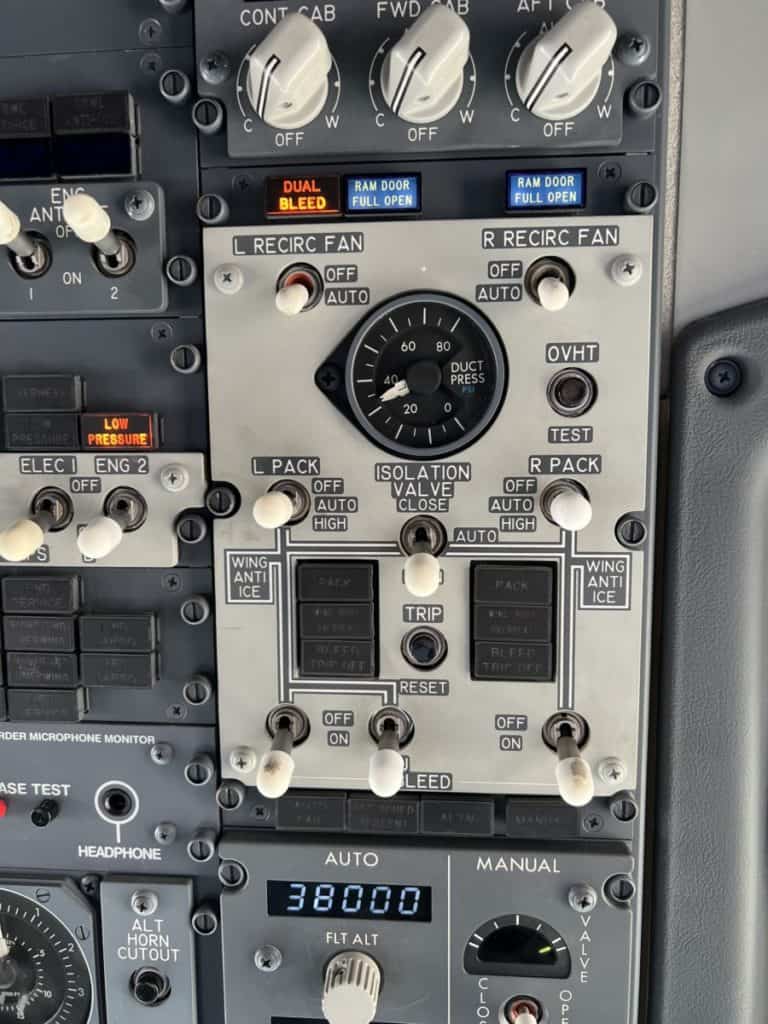
Another thing the APU can do is to run the air conditioning packs during takeoffs when the aircraft engines are close to full power. When the aircraft is heavy and the temperature and humidity are high the engines can produce more power if they are not powering the aircon packs.
By running the APU to feed the aircon packs that extra power of the engines increases the safety margin at takeoff and during climb out. Once at sufficient altitude the pilots will then turn off the APU.

Join My Newsletter & Get Great Tips, Information and Experiences To Help You Become a Superb Pilot!
Main Engine Starting
One of the most important things an APU does is provide electrical power and air (18psi) for engine starting without having the need to use ground equipment. This is very handy in small remote airports where the ground handling infrastructure is not as complete as big international airports.
The APU only needs a DC battery and fuel for it to start, exactly the same as how the engine starts in helicopters and small airplanes, however, the main aircraft engines need far more power than a battery can provide to spool up the compressor and turbine to starting rpm, or the electrical motors would need to be very large which prevents them from being installed under the engine cowls.
This is where the APU provides assistance.
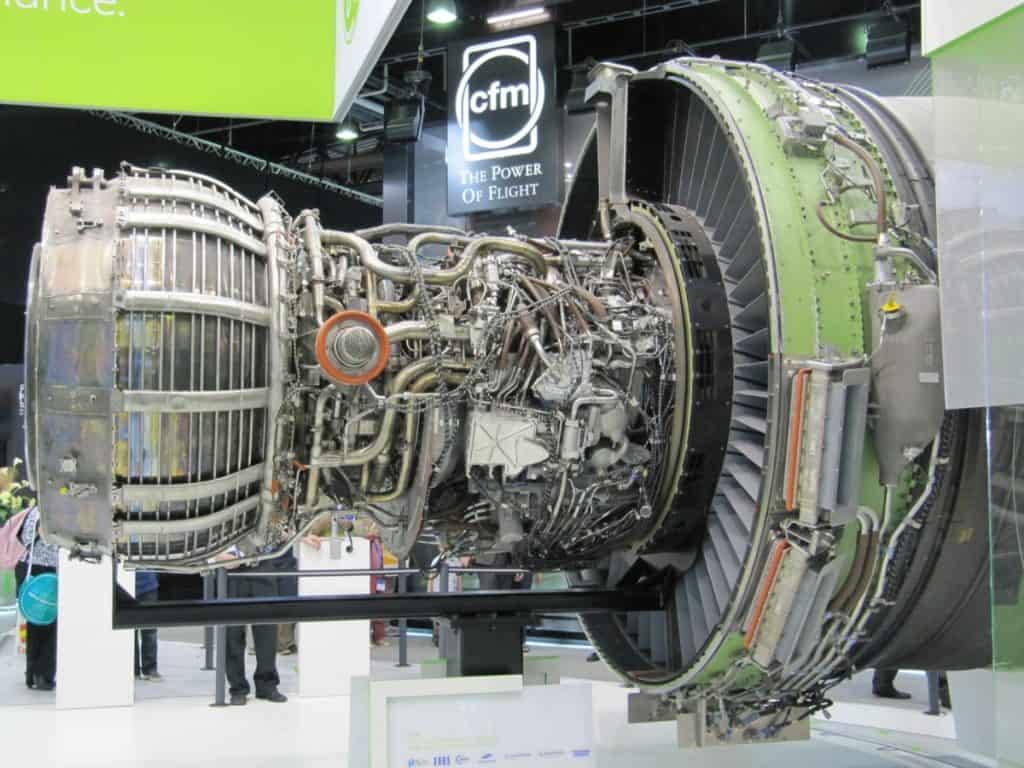
To get the main engines spooled up to starting RPM they use pressurized air that is provided by the APU.
The air that is pressurized in the compressor section of the APU is then ‘Bled’ off and fed to the main engines – This is known as Bleed Air.
The bleed air is fed by tubes to the main engines of the aircraft and used to rotate the turbine to a speed sufficient for it to run by itself after introducing fuel into the equation. This is known as self-sustaining.
Once the engine has started and is self-sustaining the air is no longer required and the APU is automatically isolated from the engine start sequence, shut down, and not used for the remainder of the flight unless an emergency develops and the APU is required.
Emergencies
A lot of emergency checklists require the use of the APU. Every electrical failure requires the pilots to start the APU and use it as an alternate power source to run the aircraft’s systems. A single or double-engine failure also requires the use of the APU both for electrical power and air conditioning/pressurization.
Hydraulic failures may also require the use of the APU since it provides electrical power to the hydraulic pumps and valves. Normally, the hydraulic system is pressurized by engine-driven hydraulic pumps. In the event of a double engine failure, there are emergency electrically-driven hydraulic pumps that maintain system pressure.
The APU supplies the electrical power to these emergency pumps.
Do All Airplanes Have An APU?
APU’s are generally only found on large airplanes, helicopters, and business jets. On smaller aircraft at least one engine can be started using a battery, further engines can then be supplied with electrical power or starting from the running engine saving weight, space, and cost.
Even though the APU is being used for many reasons on an aircraft it is actually not a mandatory item for an aircraft fitted with one to depart. The aircraft can depart with an inoperative APU for a number of flights before having to be fixed. I can tell you from personal experience that it is an item that if it’s inoperative it can make your day worse with the extra workload and otherwise unnecessary delays.
Apart from the sound of a running APU, most people will not be aware if the aircraft even has one fitted. As you can see in the images above, the APU is hidden away inside the fuselage with only the intake and exhaust ports visible.
Because of the high decibel noise the APU creates some airports in fact have noise restrictions that require the flight crew to switch the APU off immediately after the ground power has been connected and it is not allowed to start it again until 15 minutes usually before starting the main engines of the aircraft.
To aid with this most airports now have either a system to plug in the aircraft to the main power grid (Fixed Power – FP) or use a towable Ground Power Unit (GPU). These will provide electrical power for lighting and cockpit instrumentation while parked on the ramp.
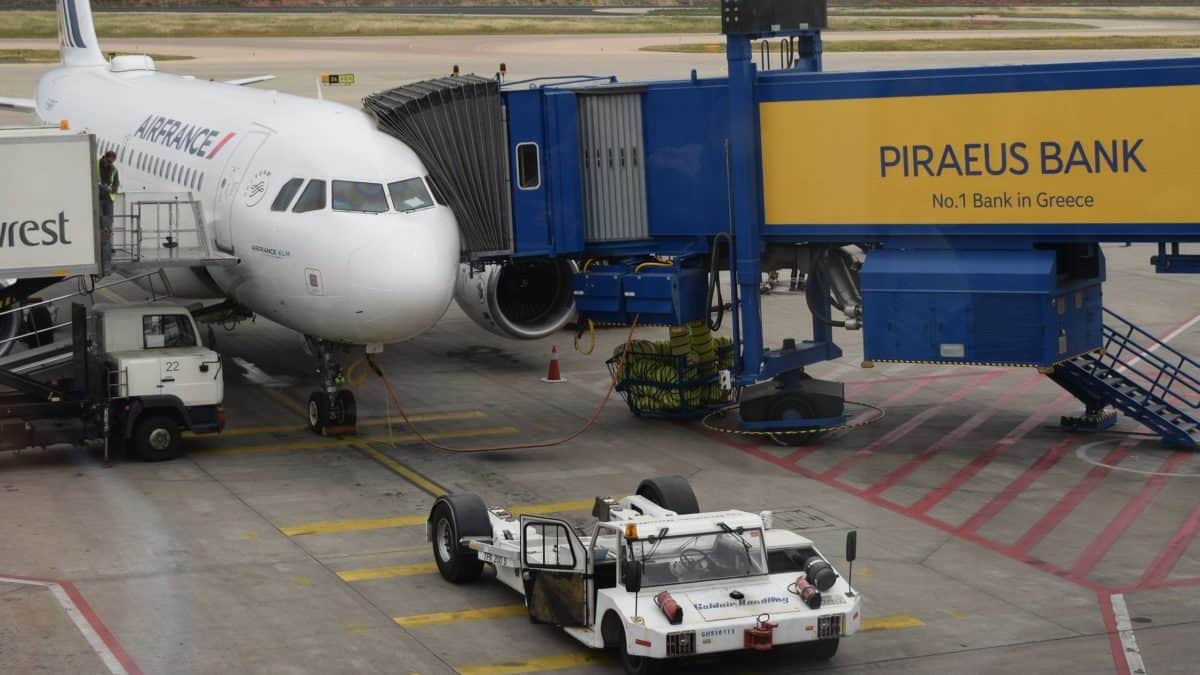
If the aircraft needs heating or cooling you may have seen the large yellow hoses hanging under the jetway. Those are connected to a HVAC unit on the jetway that then regulates the aircraft temperature when the hose/s is connected.
Learn More…
Try These Articles:
* Why Are Airplane Engines So Expensive?
* Can a Plane Land Itself?

